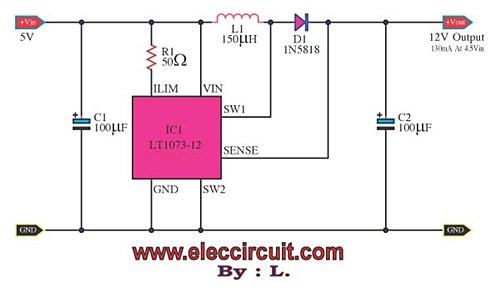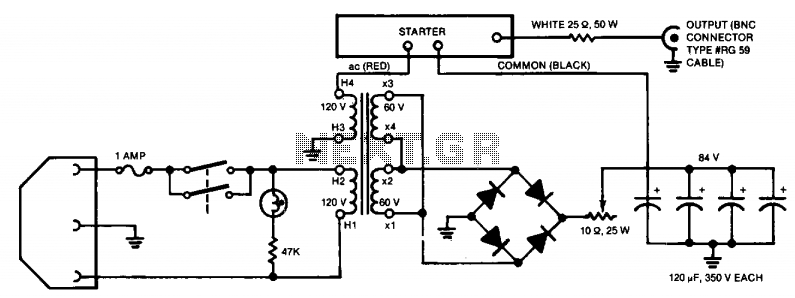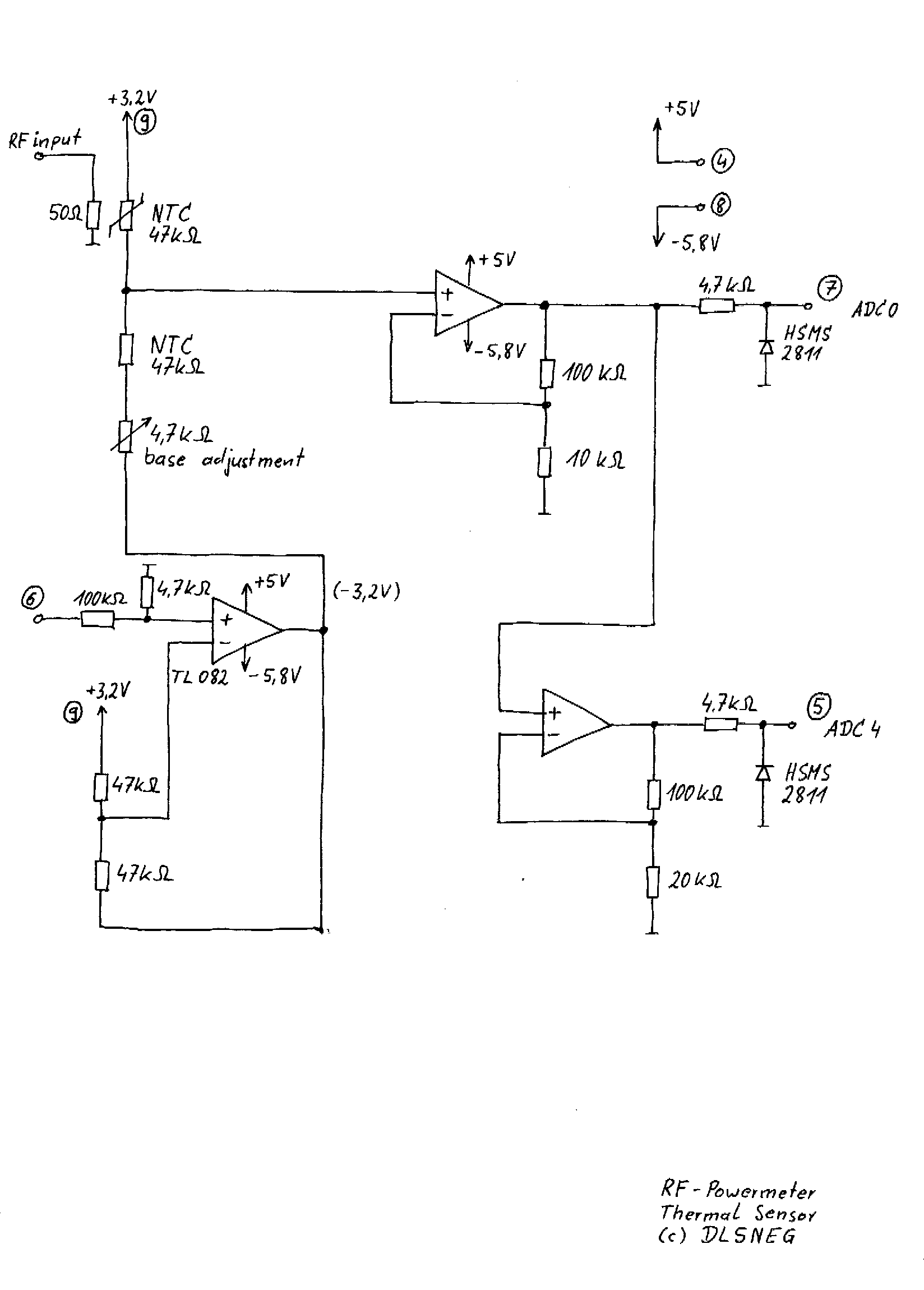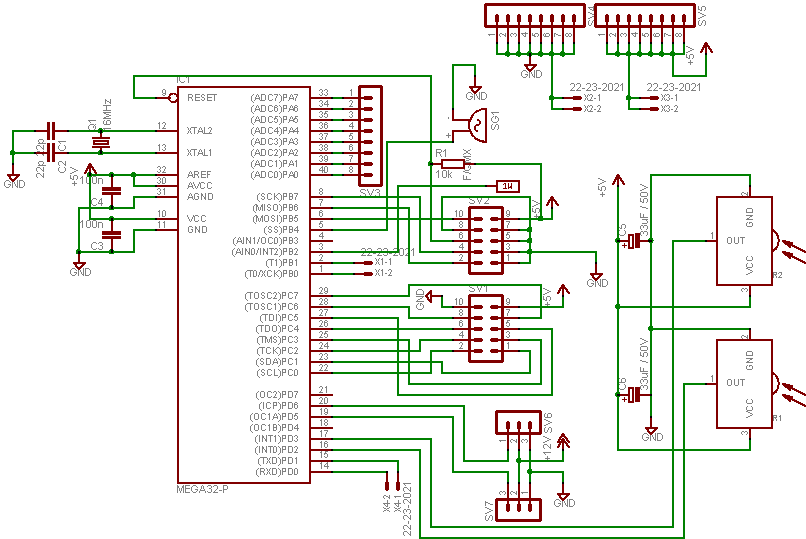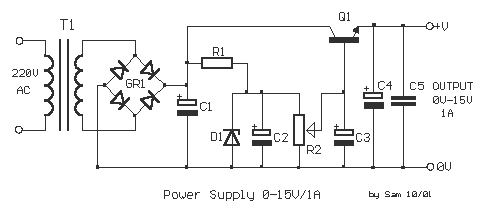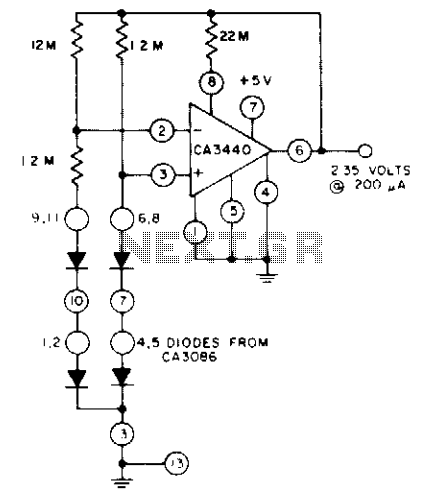
Nitrogen Laser High Voltage Power Supply
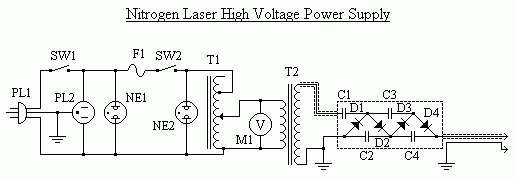
The schematic of the power supply is illustrated below. It operates using standard household power of 120VAC at a frequency of 50/60Hz, with an adjustable output that can reach up to 25kV or higher.
The power supply circuit is designed to convert standard alternating current (AC) from a household outlet into a high-voltage direct current (DC) output. The initial stage of the circuit typically includes a transformer that steps down the voltage to a safer level before being rectified. The transformer is selected based on its ability to handle the input voltage and frequency while providing the necessary isolation and voltage transformation.
Following the transformer, a rectifier circuit is employed, which may consist of diodes arranged in a bridge configuration to convert the AC voltage to pulsating DC. This stage is crucial for ensuring that the output can be further processed to achieve the desired high voltage.
To smooth the pulsating DC signal, filtering capacitors are added. These capacitors help to reduce voltage ripple, providing a more stable DC output. The choice of capacitance values is important to ensure effective filtering without introducing excessive delays in response to load changes.
For the adjustable output feature, a voltage regulation circuit is implemented. This may include adjustable resistors or potentiometers that allow for fine-tuning of the output voltage. In some designs, feedback mechanisms are integrated to maintain a consistent output voltage despite variations in load conditions.
The final stage of the circuit may include additional high-voltage components, such as a voltage multiplier circuit, to achieve the desired output voltage levels exceeding 25kV. This could involve multiple stages of capacitors and diodes arranged to incrementally increase the voltage to the required levels.
Safety measures are paramount in high-voltage power supply designs. Isolation techniques, such as opto-isolators, may be used to separate the control circuitry from the high-voltage output. Additionally, proper insulation and protective enclosures are essential to prevent accidental contact with high-voltage components.
Overall, the schematic represents a complex interplay of components designed to safely convert and regulate standard household AC power into a high-voltage DC output suitable for various applications.The schematic of the power supply is shown below. It runs off standard household power of 120VAC 50/60Hz, and the output is adjustable up to 25kV or more. For.. 🔗 External reference
The power supply circuit is designed to convert standard alternating current (AC) from a household outlet into a high-voltage direct current (DC) output. The initial stage of the circuit typically includes a transformer that steps down the voltage to a safer level before being rectified. The transformer is selected based on its ability to handle the input voltage and frequency while providing the necessary isolation and voltage transformation.
Following the transformer, a rectifier circuit is employed, which may consist of diodes arranged in a bridge configuration to convert the AC voltage to pulsating DC. This stage is crucial for ensuring that the output can be further processed to achieve the desired high voltage.
To smooth the pulsating DC signal, filtering capacitors are added. These capacitors help to reduce voltage ripple, providing a more stable DC output. The choice of capacitance values is important to ensure effective filtering without introducing excessive delays in response to load changes.
For the adjustable output feature, a voltage regulation circuit is implemented. This may include adjustable resistors or potentiometers that allow for fine-tuning of the output voltage. In some designs, feedback mechanisms are integrated to maintain a consistent output voltage despite variations in load conditions.
The final stage of the circuit may include additional high-voltage components, such as a voltage multiplier circuit, to achieve the desired output voltage levels exceeding 25kV. This could involve multiple stages of capacitors and diodes arranged to incrementally increase the voltage to the required levels.
Safety measures are paramount in high-voltage power supply designs. Isolation techniques, such as opto-isolators, may be used to separate the control circuitry from the high-voltage output. Additionally, proper insulation and protective enclosures are essential to prevent accidental contact with high-voltage components.
Overall, the schematic represents a complex interplay of components designed to safely convert and regulate standard household AC power into a high-voltage DC output suitable for various applications.The schematic of the power supply is shown below. It runs off standard household power of 120VAC 50/60Hz, and the output is adjustable up to 25kV or more. For.. 🔗 External reference
